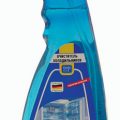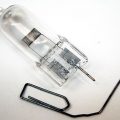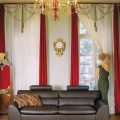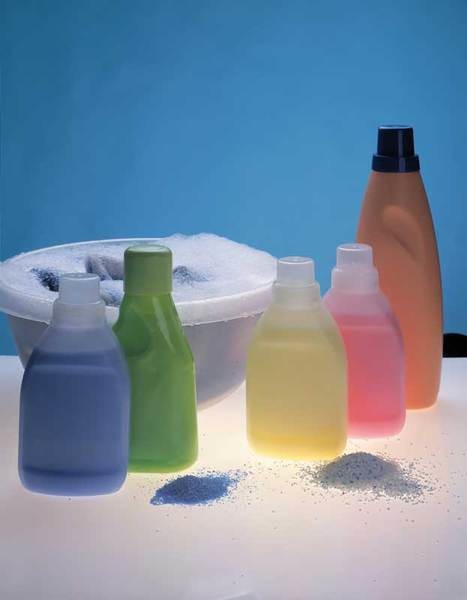 How to remove stains from clothesGrease stains (fat,Resin, paraffin, rubber, wax, oil paint and their derivatives: mastic, shoe polish, ski wax) are removed by beating on the fabric using a damp veneer soaked in a solvent. The following are used: gasoline B-10, white spirit, talc and starch. Fresh grease stains are sprinkled with talc or starch, after drying, remove the remaining powder with a brush. Old grease stains should first be softened by rubbing the stain remover with a cotton swab into the fabric from the back and front sides. The operation is repeated many times depending on the age of the stain. Grease stains of varnish, enamel, resin, rosin, sealing wax, asphalt and can be removed using purified turpentine. This applies to all types of fabric. Yellow stains from starched items are removed with a solution of hydrogen peroxide (2 teaspoons per 1 glass of water) and the treated area is lightly rinsed with clean water. Light grease and oil stains from light fabrics are best removed with ground chalk, sprinkled on the contaminated area and left for 2-4 hours. Remove by simply shaking. Wipe a fresh stain (coat, suit) with a cotton swab slightly moistened with sunflower oil. Henna stains - place the contaminated area of the fabric for 20 minutes in a mixture of equal volumes of 3% hydrogen peroxide, 2% ammonia and water, then rinse with warm water. Tea stains - Wipe the soiled area with a cotton swab soaked in a mixture of 2 teaspoons of glycerin and half a teaspoon of 1% ammonia. Fresh greasy and oily stains can be removed from any fabric by ironing the fabric with a warm iron (heated to 100° C) through several layers of blotting paper placed on both the inside and the outside of the fabric. To remove oil stains from silk fabric, use a warm solution consisting of 0.5 tablespoon of ammonia, 1 tablespoon of glycerin and 1 tablespoon of water. Greasy stains from book pages can be removed by sprinkling the soiled area with ground chalk and ironing it through white paper with a hot iron. Mold stains are removed from books by wiping the moldy areas with a rag moistened with a 2% formalin solution. Stains from Alcohol and cellulose varnishes are best removed with ethyl alcohol. A linen tablecloth soaked in wine can be cleaned by dipping it in milk and washing the tablecloth in warm water with soap or washing off such stains with slightly warmed denatured alcohol. Tea stains can also be removed in another way: wipe the stain with a swab soaked in ammonia oxide (half a teaspoon) and glycerin (2 teaspoons). Sealing wax stains are removed by wiping it with a cotton swab soaked in a mixture of equal parts of ethyl alcohol and turpentine. Turpentine is indispensable for removing stains from soot and grime.
How to remove stains from clothesGrease stains (fat,Resin, paraffin, rubber, wax, oil paint and their derivatives: mastic, shoe polish, ski wax) are removed by beating on the fabric using a damp veneer soaked in a solvent. The following are used: gasoline B-10, white spirit, talc and starch. Fresh grease stains are sprinkled with talc or starch, after drying, remove the remaining powder with a brush. Old grease stains should first be softened by rubbing the stain remover with a cotton swab into the fabric from the back and front sides. The operation is repeated many times depending on the age of the stain. Grease stains of varnish, enamel, resin, rosin, sealing wax, asphalt and can be removed using purified turpentine. This applies to all types of fabric. Yellow stains from starched items are removed with a solution of hydrogen peroxide (2 teaspoons per 1 glass of water) and the treated area is lightly rinsed with clean water. Light grease and oil stains from light fabrics are best removed with ground chalk, sprinkled on the contaminated area and left for 2-4 hours. Remove by simply shaking. Wipe a fresh stain (coat, suit) with a cotton swab slightly moistened with sunflower oil. Henna stains - place the contaminated area of the fabric for 20 minutes in a mixture of equal volumes of 3% hydrogen peroxide, 2% ammonia and water, then rinse with warm water. Tea stains - Wipe the soiled area with a cotton swab soaked in a mixture of 2 teaspoons of glycerin and half a teaspoon of 1% ammonia. Fresh greasy and oily stains can be removed from any fabric by ironing the fabric with a warm iron (heated to 100° C) through several layers of blotting paper placed on both the inside and the outside of the fabric. To remove oil stains from silk fabric, use a warm solution consisting of 0.5 tablespoon of ammonia, 1 tablespoon of glycerin and 1 tablespoon of water. Greasy stains from book pages can be removed by sprinkling the soiled area with ground chalk and ironing it through white paper with a hot iron. Mold stains are removed from books by wiping the moldy areas with a rag moistened with a 2% formalin solution. Stains from Alcohol and cellulose varnishes are best removed with ethyl alcohol. A linen tablecloth soaked in wine can be cleaned by dipping it in milk and washing the tablecloth in warm water with soap or washing off such stains with slightly warmed denatured alcohol. Tea stains can also be removed in another way: wipe the stain with a swab soaked in ammonia oxide (half a teaspoon) and glycerin (2 teaspoons). Sealing wax stains are removed by wiping it with a cotton swab soaked in a mixture of equal parts of ethyl alcohol and turpentine. Turpentine is indispensable for removing stains from soot and grime.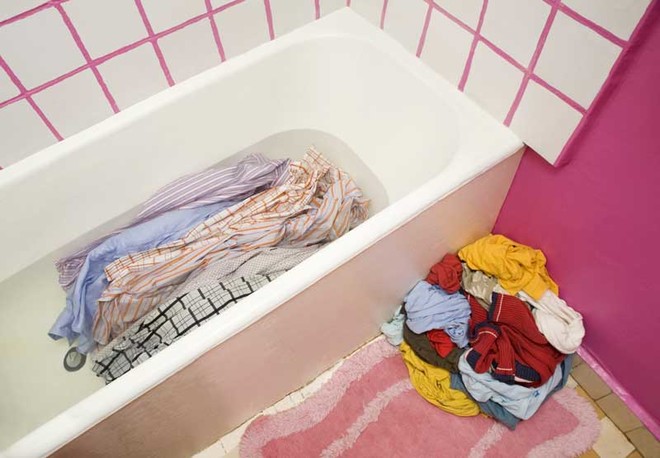 The spots of paraffin and stearin will disappear afterпроглаживания загрязненных участков горячим утюгом через несколько слоев промокательной бумаги.Свежие чернильные пятна легко выводятся с помощью парного молока или же простокваши.Так же чернильные пятна можно вывести при помощи смеси из равных объемов глицерина и этилового спирта.Чернильные пятна можно удалить, если сразу же насыпать на пятно соль и залить лимонным соком. Ткань затем тщательно и многократно выполаскивается.Еще один способ от чернильных пятен: если пятно на белой хлопчатобумажной ткани, то его натирают резаным томатом, а затем стирают с мылом.Следы от мух удаляются ватным тампоном, смоченным в нашатырном спирте.Пятно от краски или машинного масла чистят и натирают смесью равных частей нашатырного спирта и скипидара (операция может многократно повторяться); если высохнув, пятно исчезнет – необходимо простирать изделие мыльной водой.Пятна от губной помады на нестирающихся тканях чистят отмачиванием из равных частей эфира и скипидара. Смачивают их несколько раз подряд, пока пятна не станут бледнее. Затем место, где были пятна, покрывают с обеих сторон промокательной бумагой и проглаживают с обеих сторон утюгом до тех пор, пока пятна не исчезнут окончательно. Аналогичным способом удаляются пятна красок на тонкой шелковой или хлопчатобумажной ткани.Лучшее средство от пятен от анилиновых красителей обыкновенный денатурированный спирт.Пятна от дегтя – необходимо сразу же счистить его ножом. Затем опускают в горячее молоко и оставляют на час, затем стирают в холодной воде.Пятна от йода на белой и светлой тканях чистят при помощи жидкой кашицы из крахмала: покрывают ею пятна на 10-12 часов, затем стирают в теплой воде с мылом. Сушить белье рекомендуется на ярком солнце.Пятна от травы на светлой и шерстяной ткани натирают смесью из равных объемов глицерина и белка. Спустя час стирают теплой водой с мылом.Светлые пятна от травы можно удалить сразу же, если выстирать мыльной водой с небольшим количеством нашатыря.Пятна от травы на тканях, портящихся от мыла, смачивают чистым спиртом и 16 частями воды.Пятна от бельевых прищепок удаляются при помощи винной кислоты (3-4 капель на 1 л воды), оставить на ночь и выстирать. Те же пятна можно удалить, использовав раствор из равных объемов перекиси водорода, воды и нашатырного спирта.Свежие пятна крови проще всего удаляются при стирке в холодной воде с использованием моющего средства для стирки или же сначала в чистой холодной воде, затем в теплой с любым универсальным моющим средством.Застарелые пятна крови можно вывести при помощи мыльного раствора или жидкой пастой СМС, содержащего фермент и выдержать несколько часов в теплом месте.Пятна от мочи можно вывести, опустив загрязненный участок на 1 час в раствор уксуса (1 ст. ложка на 1/2 стакана воды).Пятна от туши и гуаши удаляются при помощи холодной воды с добавлением любого моющего средства.Пятна от яичного желтка снимают тампоном, смоченным в подогретом до 35° С глицерине, который необходимо смывать теплой водой с мылом каждые 15 минут.Пятна от рыбы, соусов необходимо выводить при помощи мыльного раствора с последующей промывкой теплой водой.Пятна от ржавчины удаляют смесью из равных частей мелкой поваренной соли и порошка винной кислоты. Смесь смачивают водой, доводят до образования кашицы и ее накладывают на пятно и, натянув ткань, держат на свету.Эти же еще несколькими способами:
The spots of paraffin and stearin will disappear afterпроглаживания загрязненных участков горячим утюгом через несколько слоев промокательной бумаги.Свежие чернильные пятна легко выводятся с помощью парного молока или же простокваши.Так же чернильные пятна можно вывести при помощи смеси из равных объемов глицерина и этилового спирта.Чернильные пятна можно удалить, если сразу же насыпать на пятно соль и залить лимонным соком. Ткань затем тщательно и многократно выполаскивается.Еще один способ от чернильных пятен: если пятно на белой хлопчатобумажной ткани, то его натирают резаным томатом, а затем стирают с мылом.Следы от мух удаляются ватным тампоном, смоченным в нашатырном спирте.Пятно от краски или машинного масла чистят и натирают смесью равных частей нашатырного спирта и скипидара (операция может многократно повторяться); если высохнув, пятно исчезнет – необходимо простирать изделие мыльной водой.Пятна от губной помады на нестирающихся тканях чистят отмачиванием из равных частей эфира и скипидара. Смачивают их несколько раз подряд, пока пятна не станут бледнее. Затем место, где были пятна, покрывают с обеих сторон промокательной бумагой и проглаживают с обеих сторон утюгом до тех пор, пока пятна не исчезнут окончательно. Аналогичным способом удаляются пятна красок на тонкой шелковой или хлопчатобумажной ткани.Лучшее средство от пятен от анилиновых красителей обыкновенный денатурированный спирт.Пятна от дегтя – необходимо сразу же счистить его ножом. Затем опускают в горячее молоко и оставляют на час, затем стирают в холодной воде.Пятна от йода на белой и светлой тканях чистят при помощи жидкой кашицы из крахмала: покрывают ею пятна на 10-12 часов, затем стирают в теплой воде с мылом. Сушить белье рекомендуется на ярком солнце.Пятна от травы на светлой и шерстяной ткани натирают смесью из равных объемов глицерина и белка. Спустя час стирают теплой водой с мылом.Светлые пятна от травы можно удалить сразу же, если выстирать мыльной водой с небольшим количеством нашатыря.Пятна от травы на тканях, портящихся от мыла, смачивают чистым спиртом и 16 частями воды.Пятна от бельевых прищепок удаляются при помощи винной кислоты (3-4 капель на 1 л воды), оставить на ночь и выстирать. Те же пятна можно удалить, использовав раствор из равных объемов перекиси водорода, воды и нашатырного спирта.Свежие пятна крови проще всего удаляются при стирке в холодной воде с использованием моющего средства для стирки или же сначала в чистой холодной воде, затем в теплой с любым универсальным моющим средством.Застарелые пятна крови можно вывести при помощи мыльного раствора или жидкой пастой СМС, содержащего фермент и выдержать несколько часов в теплом месте.Пятна от мочи можно вывести, опустив загрязненный участок на 1 час в раствор уксуса (1 ст. ложка на 1/2 стакана воды).Пятна от туши и гуаши удаляются при помощи холодной воды с добавлением любого моющего средства.Пятна от яичного желтка снимают тампоном, смоченным в подогретом до 35° С глицерине, который необходимо смывать теплой водой с мылом каждые 15 минут.Пятна от рыбы, соусов необходимо выводить при помощи мыльного раствора с последующей промывкой теплой водой.Пятна от ржавчины удаляют смесью из равных частей мелкой поваренной соли и порошка винной кислоты. Смесь смачивают водой, доводят до образования кашицы и ее накладывают на пятно и, натянув ткань, держат на свету.Эти же еще несколькими способами:
- using hot lemon juice, then rinse and iron with iron;
- using a mixture of 50 g of potassium chloride and 10 g of tartaric acid in 1 liter of water.
 Sweat stains from white clothes are removed by wetting them.in cold water with baking soda dissolved in it. After 30 minutes, they are washed in warm water with soap and then in a solution of ammonia (1 tbsp per 250 g of water). Sweat stained from colored wool or cotton cloth is washed in a solution of sodium hyposulfite; then rinse and immerse in a salty solution. Sprinkle salt from a hot iron, pour lemon juice, diluted with water, dried in the sun, and then wash. Fresh sunflower or olive oil stains are cleaned in the following ways:
Sweat stains from white clothes are removed by wetting them.in cold water with baking soda dissolved in it. After 30 minutes, they are washed in warm water with soap and then in a solution of ammonia (1 tbsp per 250 g of water). Sweat stained from colored wool or cotton cloth is washed in a solution of sodium hyposulfite; then rinse and immerse in a salty solution. Sprinkle salt from a hot iron, pour lemon juice, diluted with water, dried in the sun, and then wash. Fresh sunflower or olive oil stains are cleaned in the following ways:
- a mixture of equal parts of gasoline, turpentine and alcohol;
- with the help of blotting paper wetted with gasoline (top sheet);
- a mixture of grated soap, two parts of turpentine and one part of pure liquid ammonia.
Cream stains are removed with a mixture of one portion.turpentine and two pieces of lemon juice; then wash in warm water. Dried milk stains are removed with gasoline and soapy water. They clean the coffee and milk stains with glycerin, applying a thin layer for a while, and then immerse the fabric for 10-12 hours in soap water. from wine and fruit on pure white silk can be removed by pulling a cloth and pouring on a spot of fresh boiled milk. Dot from berries and red wine is poured with table salt, then washed with water. Dot from liquor on white or colored silk is cleaned with a solution of 10 g of pure alcohol or liquid ammonia per 100 g of water. Moisten the stain with a solution, then wash it in clean water. Stain from sugar syrup: scrape off the sugar crystals, place the stain under a stream of boiling water. Cotton fabrics and silk fabrics are washed in warm soapy water, woolen in ammonia solution. Cocoa stain is removed using a mixture of equal parts of ammonia and turpentine.




